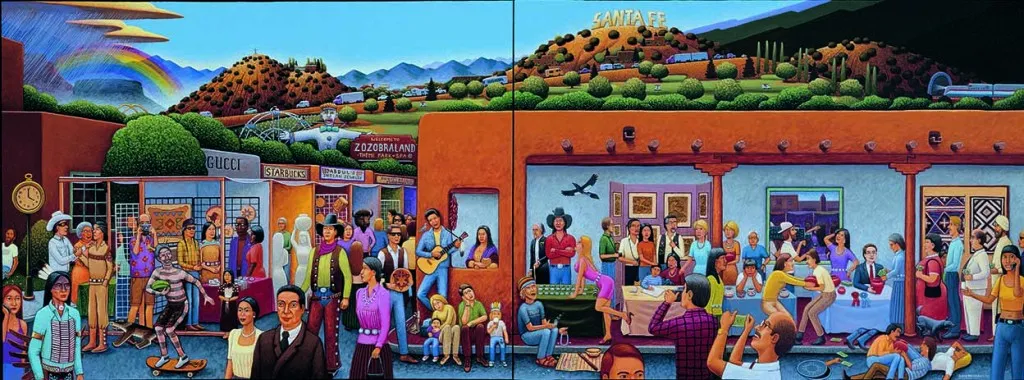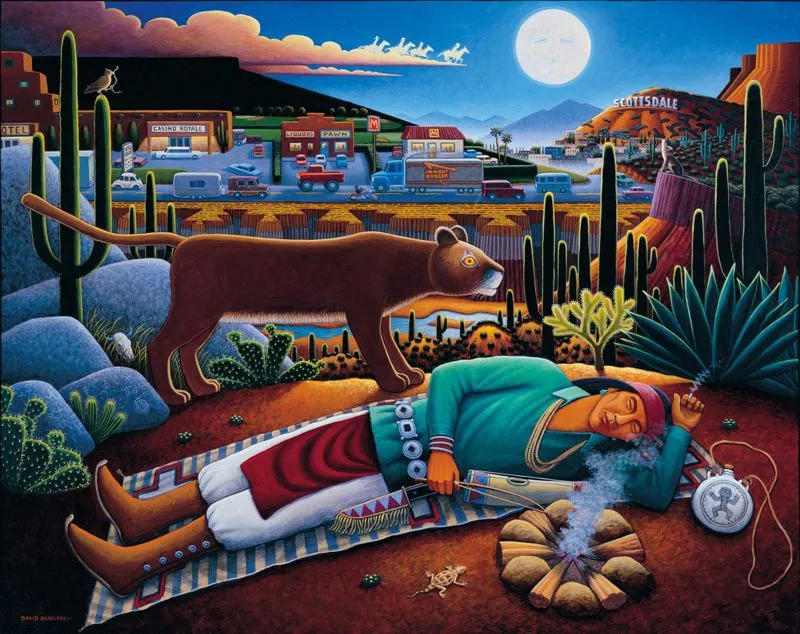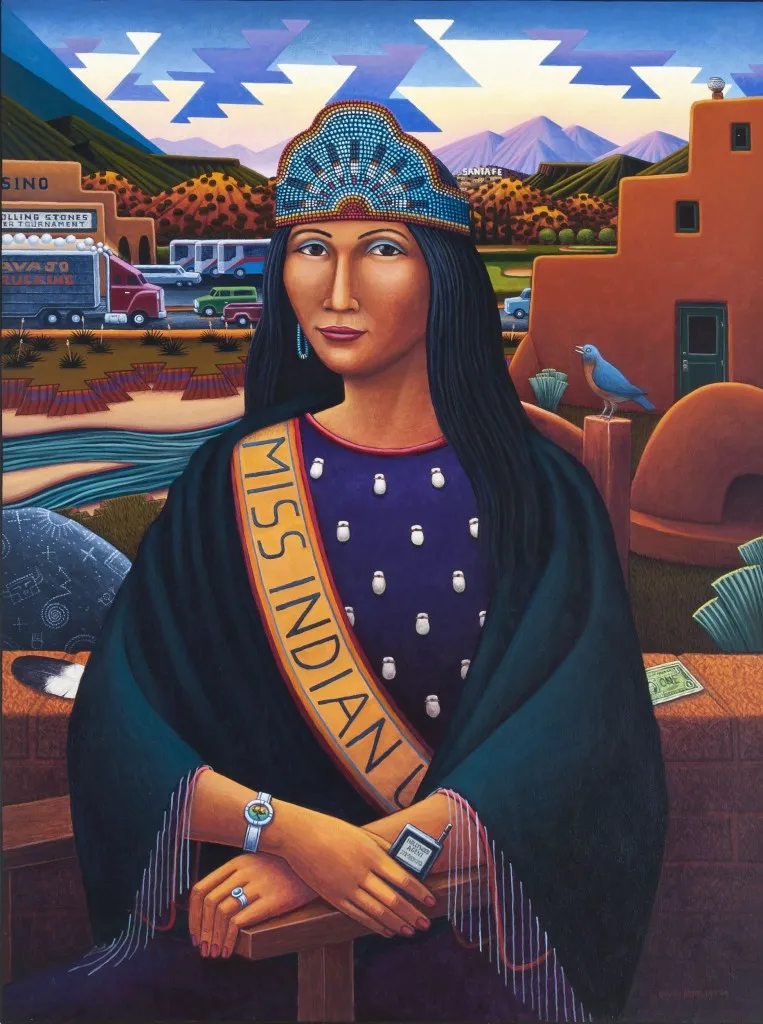David Bradley Retrospective Captures Lasting Legacy of Contemporary Native Artist
More than 30 works from his nearly 40-year career are featured in the traveling show, now in Los Angeles
David Bradley’s oeuvre spans multiple mediums, genres and artistic movements. In some works, the artist, who is Minnesota Chippewa, channels the silkscreen portraits popularized by Andy Warhol; in others, he reimagines such classic scenes as Grant Wood’s “American Gothic” or presents panoramic tableaux reminiscent of monumental Renaissance altarpieces and panel paintings. Regardless of subject matter or style, however, a common preoccupation—namely, interrogating the Native American experience as represented by commercial clichés versus lived realities—underlies all of Bradley’s work.
A traveling exhibition now on view at Los Angeles’ Autry Museum of the American West draws on more than 30 paintings, mixed media works and bronze sculptures to trace the trajectory of Bradley’s nearly 40-year career. Launched at Santa Fe’s Museum of Indian Arts & Culture in February 2015, the retrospective, titled Indian Country: The Art of David Bradley, concluded its initial run in January 2016.
Bradley’s vibrant, colorful art often reinterprets famous paintings from an indigenous perspective. Instead of a dour farmer and his sister, for example, the artist depicts such figures as Sitting Bull, Tonto and the Lone Ranger, the latter of whom appear as recurring characters—and reminders of Hollywood commercialization—across the exhibition.
Figures from Native American history are far from the only recognizable inhabitants of Bradley’s canvases: In the crowded “El Farol, Canyon Road Cantina” scene, Georgia O’Keeffe, Bill and Hillary Clinton, and a bandaged Vincent van Gogh listen to jazz music alongside the artist himself, as well as prominent Santa Fe locals including fellow artist Tommy Macaione.
Many of the “art history appropriations” embraced by Bradley appear in multiple interpretations. Riffs on Henri Rousseau’s “Sleeping Gypsy,” for instance, replace the French painter’s bushy maned-lion with first a mountain lion and then a bear. In a 2005 take on the 1897 original, cacti, a distinctive city skyline and a sleeping Native American woman surrounded by tiny desert critters easily identify the setting as New Mexico rather than a generic moonlit oasis.

Many of the works on display reflect Bradley’s own upbringing: Born in Eureka, California, in 1954 to a Minnesota Chippewa mother and an Anglo father, he was raised by a non-Native family in a predominantly white Minnesota community. “Bradley experienced firsthand the racism toward Native peoples prevalent in Minnesota at the time,” the Santa Fe New Mexican’s Michael Abatemarco wrote prior to the show’s opening.
This experience closely informed Bradley's career as an artist and activist. Off the canvas, he is just as recognizable for his grassroots campaign to expose the multimillion-dollar industry surrounding counterfeit arts and crafts passed off as authentic native creations.
In a 2015 interview with Cowboys & Indians’ Dana Joseph, a 61-year-old Bradley reflected on that legacy via email. Four years prior, in August 2011, he had been diagnosed with ALS, and due to his deteriorating health, was no longer able to participate in a spoken interview. Answering in text, the artist explained that despite knowing his own career would suffer for speaking out, he couldn’t just step aside and watch rampant exploitation continue in the art world.
“I became the most blacklisted Indian artist in the country, and it continues to this day,” Bradley said. “But I know we did the right thing. We started a national dialogue about Indian identity, which resulted in the passage of both a New Mexico Indian Arts and Crafts Law as well as a federal version of that law.”
Bradley made that the center of his artwork, too, taking on everything “from Hollywood clichés to Native stereotypes, the art market, and the racism imbedded within them,” as an Autry Museum press release puts it. And he did so through his own distinctive voice, using vivid bursts of color, characteristic humor and recognizable imagery to tackle topics with no easy answers. "My art suggests and comments on situations but does not resolve them," he says in a statement provided to the Autry.
Talking about Bradley's legacy, Autry’s Amy Scott shares, “Bradley's tone is often deceptively light, and his work fills viewers with a kind of joy even as it implores them to digest the biting comments he makes about the world around him.”
Indian Country: The Art of David Bradley is on view at the Autry Museum of the American West in Los Angeles through January 5, 2020.
/https://tf-cmsv2-smithsonianmag-media.s3.amazonaws.com/accounts/headshot/mellon.png)


/https://tf-cmsv2-smithsonianmag-media.s3.amazonaws.com/filer/2e/be/2ebec1d4-e0a7-4db8-bd31-abf56f1c15ae/bradley_hopi_maidenslow.jpg)

/https://tf-cmsv2-smithsonianmag-media.s3.amazonaws.com/accounts/headshot/mellon.png)